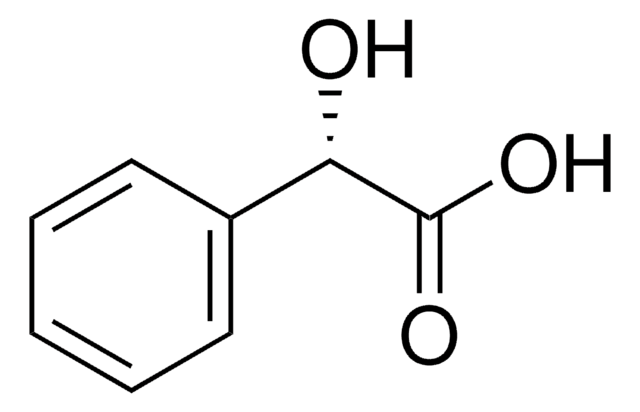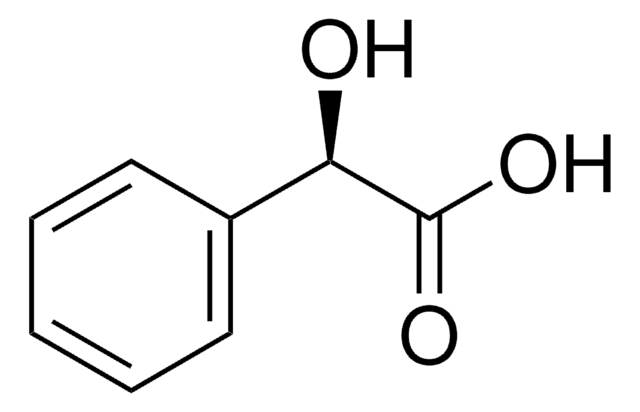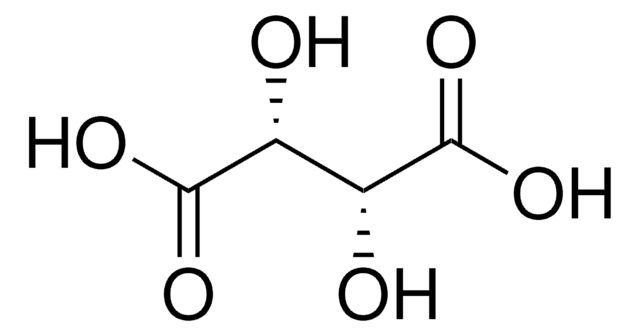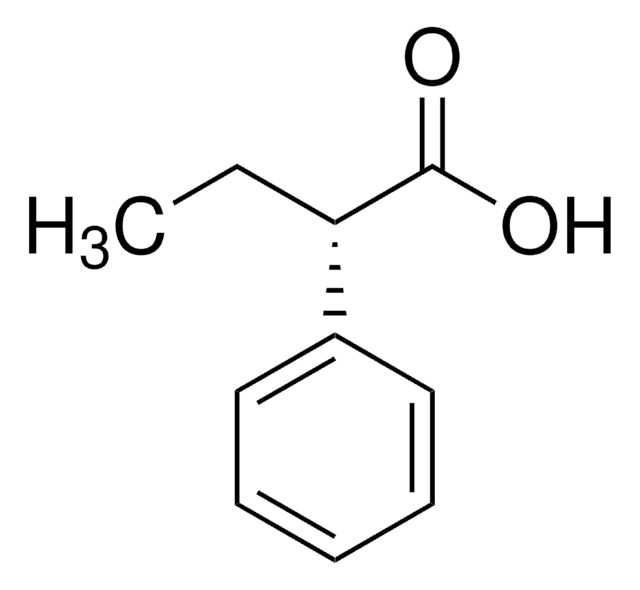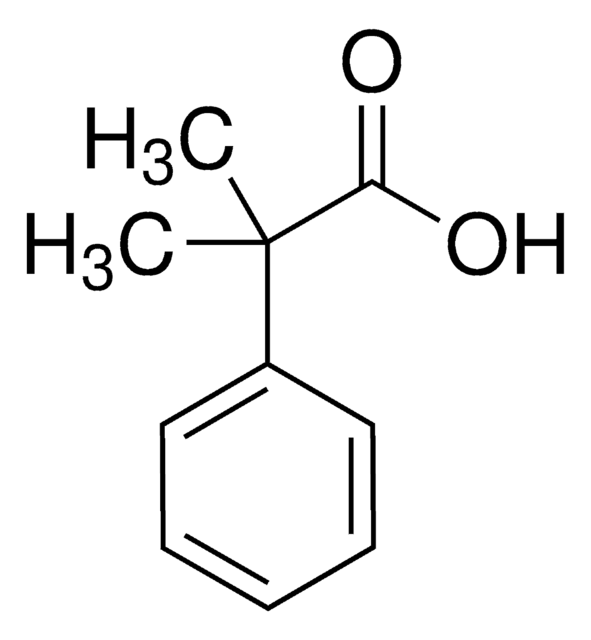279900
(S)-(+)-2-Phenylpropionic acid
97%
Sinónimos:
(S)-(+)-Hydratropic acid, (S)-HTA
About This Item
Productos recomendados
assay
97%
form
solid
optical activity
[α]20/D +72°, c = 1.6 in chloroform
optical purity
ee: 98% (HPLC)
refractive index
n20/D 1.522 (lit.)
bp
115 °C/1 mmHg (lit.)
mp
29-30 °C (lit.)
density
1.1 g/mL at 25 °C (lit.)
functional group
carboxylic acid
phenyl
SMILES string
C[C@H](C(O)=O)c1ccccc1
InChI
1S/C9H10O2/c1-7(9(10)11)8-5-3-2-4-6-8/h2-7H,1H3,(H,10,11)/t7-/m0/s1
InChI key
YPGCWEMNNLXISK-ZETCQYMHSA-N
¿Está buscando productos similares? Visita Guía de comparación de productos
Application
signalword
Warning
hcodes
Hazard Classifications
Eye Irrit. 2 - Skin Irrit. 2 - Skin Sens. 1 - STOT SE 3
target_organs
Respiratory system
Storage Class
11 - Combustible Solids
wgk_germany
WGK 3
flash_point_f
>235.4 °F - closed cup
flash_point_c
> 113 °C - closed cup
ppe
dust mask type N95 (US), Eyeshields, Faceshields, Gloves
Elija entre una de las versiones más recientes:
¿Ya tiene este producto?
Encuentre la documentación para los productos que ha comprado recientemente en la Biblioteca de documentos.
Chromatograms
application for HPLCNuestro equipo de científicos tiene experiencia en todas las áreas de investigación: Ciencias de la vida, Ciencia de los materiales, Síntesis química, Cromatografía, Analítica y muchas otras.
Póngase en contacto con el Servicio técnico


